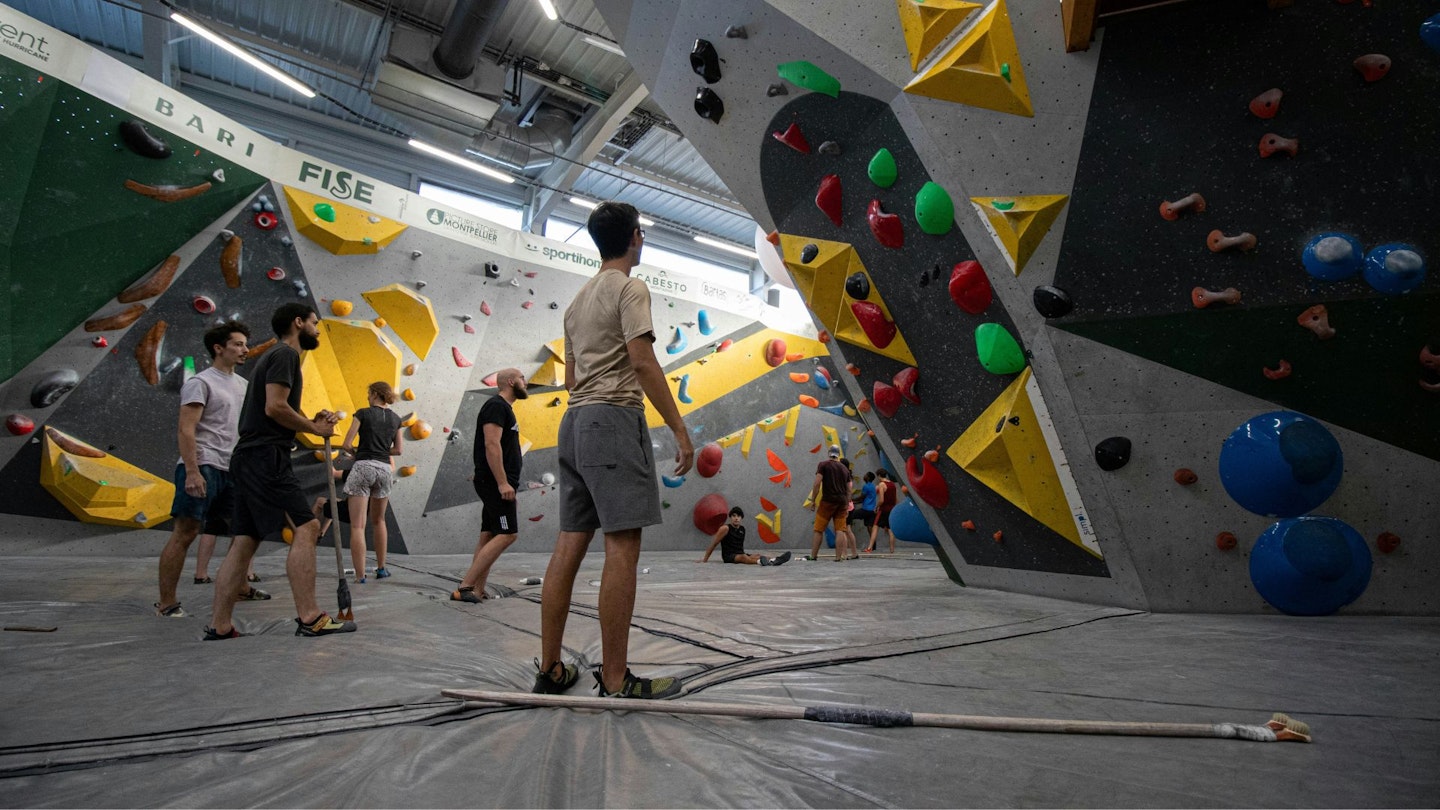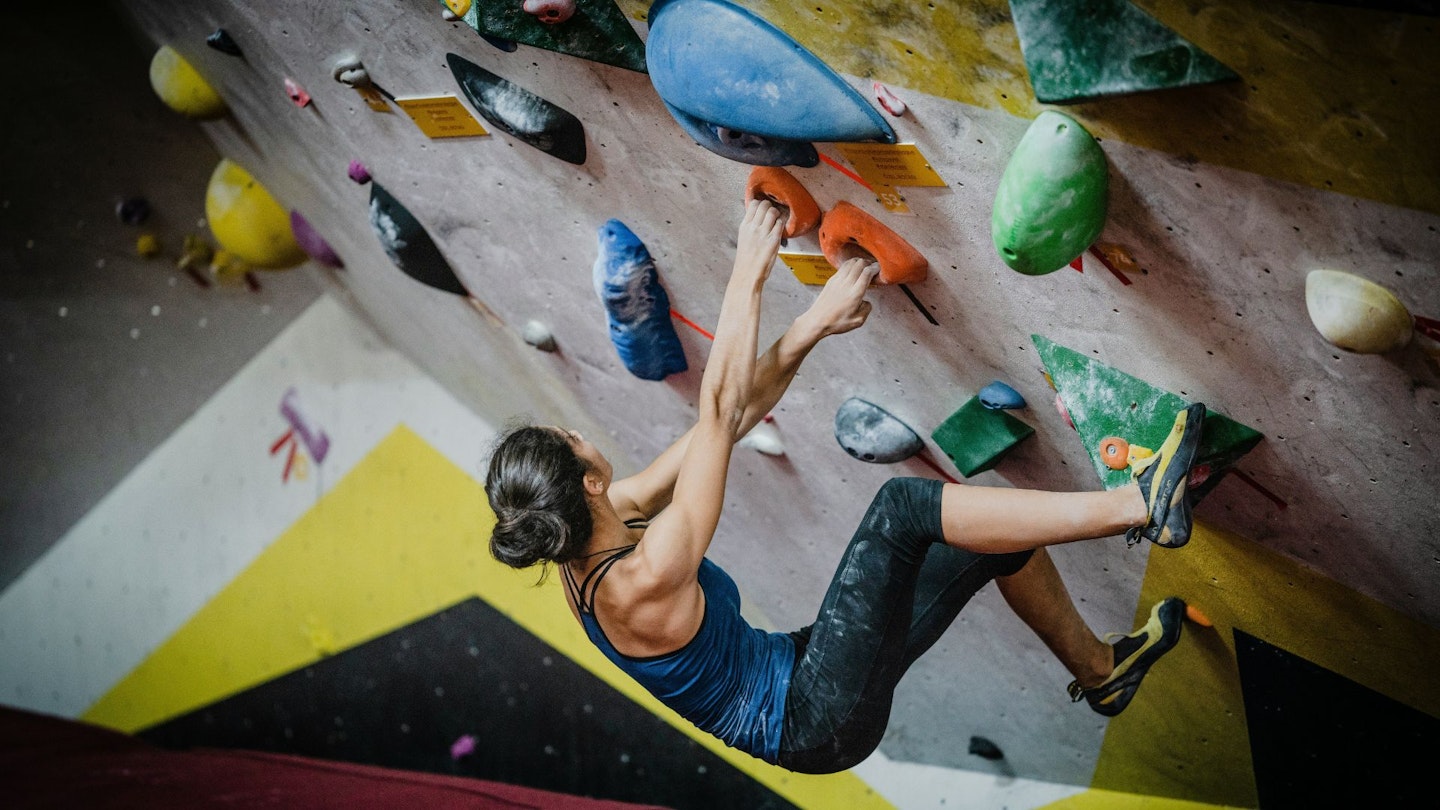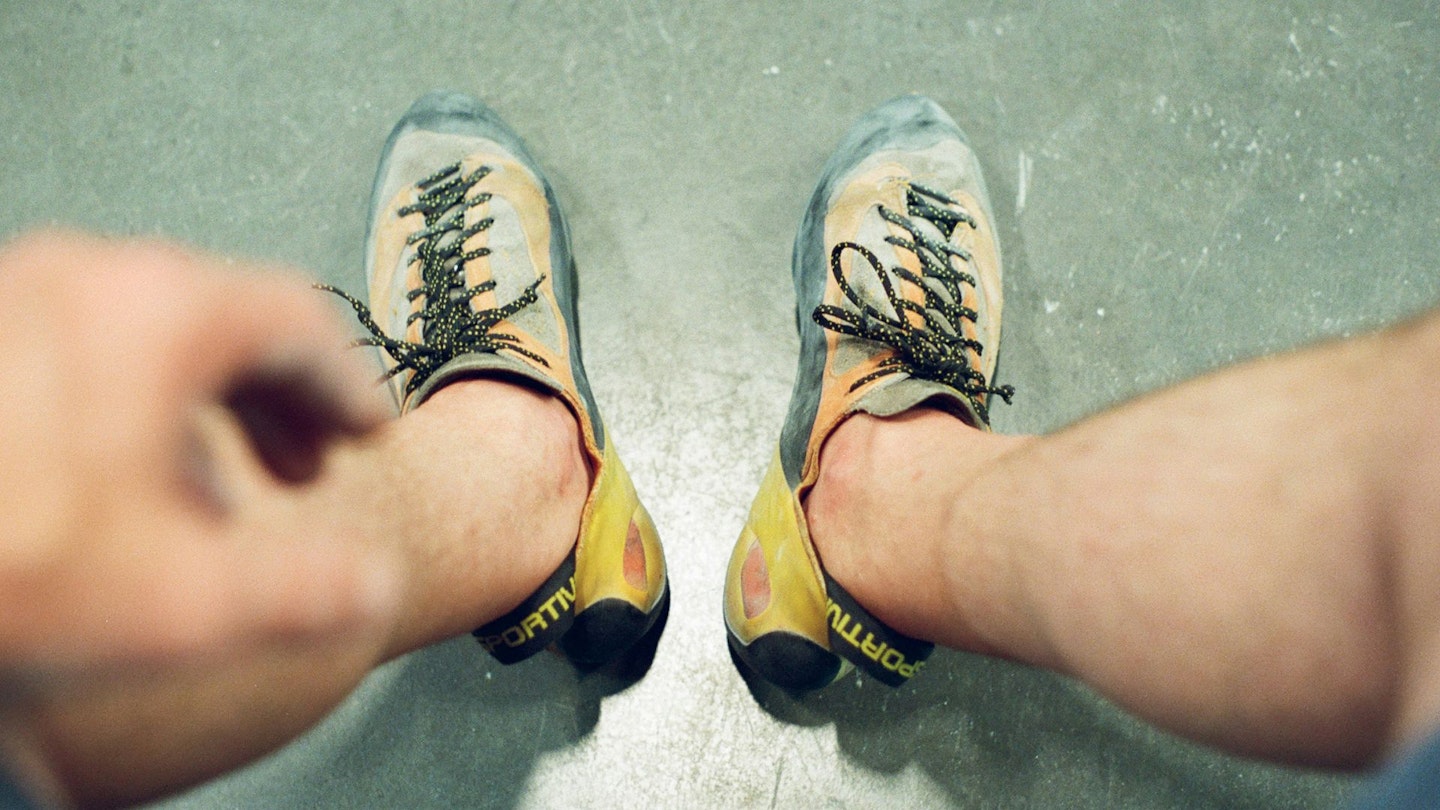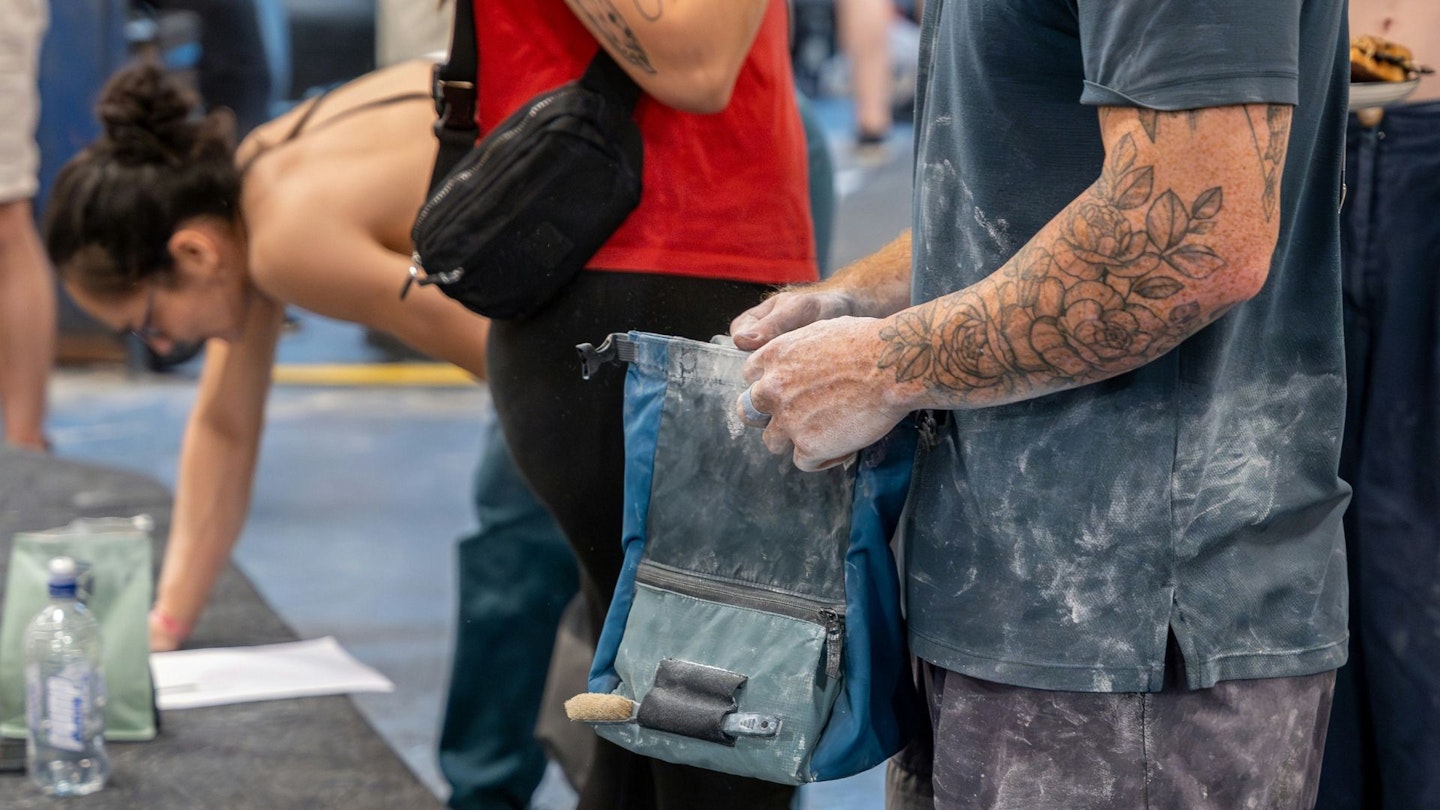Stepping into a bouldering gym can be jarring for the senses: there's bright lights, loud music and the tang of chalk mixed with sweat. Everywhere you look, climbers are creeping up the walls, standing under them and falling off them.
Not to mention the fact that as soon as you cross the threshold, you're entering a socially coded space, where a set of unspoken rules govern people's behaviour. These are the kinds of rules which aren’t written on a poster on the front desk, but you pick up through experience.
When is it okay to offer someone advice? Can you flash your friend’s project? And what about sneaking to the loos in your climbing shoes? Not knowing the answers can be intimidating, especially in a space where every move is on display. Here are eight unwritten rules every indoor boulderer should know.
For the rest of our unwritten rules series, check out 10 things you might be doing wrong trail running and the dos and don'ts of exploring on foot.
1. Don’t beta spray

Beta spraying, otherwise known as giving unsolicited advice to fellow climbers, often comes from a place of wanting to seem knowledgeable and competent – I’m the person who knows, I’ve figured it out, and now it’s my duty to inform you of my superior method.
In my experience, it’s closely linked to mansplaining. It’s not always pernicious, as sometimes a bit of advice about how to solve a problem is welcome. But sometimes you want to figure it out for yourself, without someone jutting in asking, “have you tried this?”.
The beta sprayer is essentially prioritising their need for recognition over your own needs. There might be many ways of solving a problem, so their method isn’t necessarily the best – it just works for them. And when someone tells you how it’s done, they’re depriving you of the satisfaction of having solved it yourself. Not cool.
2. Avoid flashing someone else’s project (unless you're a comp kid)
If there’s something that your friend is trying really hard on, and has been for multiple sessions, then you must avoid flashing it in front of them – unless they explicitly tell you they want the beta. A climber’s ego must be protected at all costs, otherwise it’ll crumble away like wet sandstone.
The only other exception here is if you’re a comp kid, in which case whizzing around the room flashing grown-ups’ long-standing projects is your sole objective.
3. Brushers’ rights

If you brush a problem, it’s your prerogative to climb it next. You’ve gone to the effort of brushing it, so you've staked a claim to these holds: they’re yours for a precious moment before they get greased and caked by the next person.
Brushing is a selfish act. It’s not done for the general good, but for the benefit of the brusher. It’s like if your friend assumes that the cookies you’ve baked are all for them – “ohh thank you, you shouldn’t have” – when really, you just wanted to eat them on the sofa in your pajamas. The cookies aren’t for you, and neither are the well-brushed holds.
Check out some more climbing accessories in our best gifts for the climber in your life (or yourself).
4. Sharing is caring
Don't hog the wall – it’s primary school stuff. You’re allowed one full try before letting someone else have a go. If you keep on falling on the first move, you can have up to about three goes, but after that point you’re going to need a beta break anyway.
If you keep on failing, it's best to wait until you can watch someone else flash it, then make random jabbing movements from the ground as you visualise the moves.
5. Don’t take your climbing shoes into the loos

This one should be an official rule, but unfortunately that's not always the case. Climbing gyms are already dirty, unventilated places, where people share germs like chalk, so if you’re someone who goes to the loo in your shoes then heads straight to the wall, spare a thought for the person who has to climb on those holds next.
Nowhere on the box you received with your new climbing shoes did it say that they’re a reliable go-to for sport climbing, bouldering and going to the loo. Their rubber sole is designed to provide friction on vertical walls, not toilet floors.
6. But wear your climbing shoes on the walls
Don’t wear climbing shoes in the toilets, but do wear them for actual climbing. No one wants sweaty toes touching where their hands are about to go.
It might be fun to show off how you can do the climb in your trainers, or barefoot, but why not get stronger so you can campus it – that’s more impressive, anyway.
7. Chalking up means that you’re about to go

The act of chalking up is a serious commitment to climb – it’s obvious to everyone else around you that you're not just idly chatting anymore. That means you now need to enter into an intricate sequence of social cues.
As my driving instructor reminds me, it’s all about awareness and planning. Check left, and then right. If there are other people eyeing up the same section of wall, you must bring together multiple pieces of information. Have they just climbed, so is it now your turn? Are they resting, or about to go?
The seasoned boulderer will gleam this with just a glance, but even so, it’s best to cover your back with one of those awkward points at the wall and a quick, “do you mind if I go?”, before falling from the first move.
8. Accept the social contract of projecting
Bouldering gyms tend to be friendly places. If you’re trying a climb at the same time as someone else, and you both fall in the same place, an unspoken bond grows between you. You must figure it out together, and neither of you can leave until both of you have done it. It's a social contract that should never be broken.
The movements you practise bouldering translate well to scrambling – learn the basics in our how to scramble guide.
About the author
Evie Nichols is Digital Writer for Live for the Outdoors. Based near the Peak District, she spends half of her time reviewing gear, and the other half repeatedly falling off rocks.
